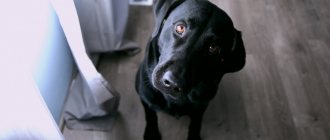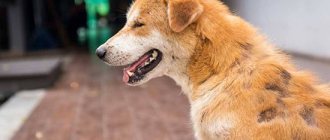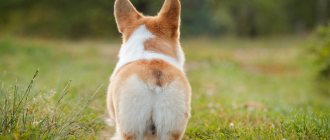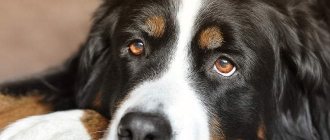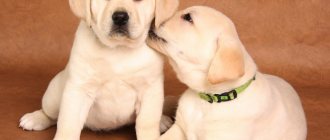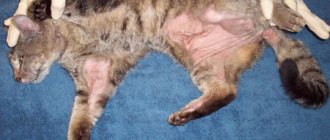When your dog regularly growls, chatters, or bites, you have a serious behavior problem.
Aggression is one of the main reasons why dog owners seek help from a professional trainer or animal behaviorist.
And it's not just larger dogs and so-called "dangerous breeds" that are prone to aggression; Any breed is capable of becoming aggressive under certain circumstances. Especially Chihuahuas.
While aggression cannot be cured overnight, you can take steps to curb aggressive behavior and help your dog remain calm.
Why do dogs behave aggressively?
Aggressive dog behavior refers to any behavior that involves an attack or impending attack. This includes immobility and rigidity, growling, baring of teeth, lunging, biting.
Your first step to stopping this behavior is to find out what is causing your dog's aggression. Some dogs growl when someone approaches them, for example when they are eating or chewing a bone.
Others react aggressively towards children or strangers.
It is not necessary that aggression be directed at a person. Some dogs become aggressive towards other animals, only certain animals (cats, not other dogs), or towards inanimate objects such as vehicle wheels or gardening equipment.
The main thing to keep in mind is that you can't come up with a plan to change your dog's behavior until you know the reason behind it.
General Remedies
There are no universal ways to wean a dog from aggression. The owner needs to look for an individual approach in each case, and together with the dog handler.
But there are general tips for correcting behavior:
- identify why anger arose and eliminate its source;
- exclude possible diseases;
- do not beat, humiliate, punish or yell at your pet;
- establish leadership;
- encourage kindness and obedience.
Children should be taught the rules of behavior around animals as early as possible. They must treat the dogs kindly and approach and pet them only with the permission of adults.
Separately, there are medicinal methods that can help remove aggression.
The first is taking sedatives. They relieve increased excitability and anxiety, and facilitate behavior correction.
The second includes castration. The method is used when a dog shows competitive, social, or sexual aggression. Moreover, the method works better with male dogs - their androgen levels drop after surgery.
In bitches, the level of hormones remains almost unchanged, so sterilization is effective only during estrus or false pregnancy.
The most common types of dog aggression include:
Territorial aggression
A dog is protecting its space or your home from what it perceives as an intruder.
Defensive aggression
A dog protects members of its pack from another animal or person. Mother dogs are also extremely protective of their pups and can become hostile towards anyone who approaches them.
Possessive aggression
The dog protects food, chews toys, bones or other objects that are valuable to it. This is sometimes called resource protection.
Aggression of fear
The dog is afraid and tries to retreat in a scary situation, but then attacks when cornered.
Defensive aggression
Similar to fear aggression - the dog attacks in defense of something rather than trying to retreat first. These dogs usually gave other, more subtle signs that they wanted to be left alone before biting, such as turning their head away.
Social aggression
The dog reacts aggressively towards other dogs in social situations. Dogs that are not properly socialized with other dogs and people may also become aggressive.
Aggression due to frustration
The dog behaves aggressively when kept on a leash or in a fenced yard. When a dog becomes agitated and cannot act on that stimulation, it may act out.
Sometimes a dog may become overly excited, for example before a walk, and bite its handler.
Redirected aggression
A dog may become aggressive towards a person who is trying to break up a dog fight. It can also happen when a dog is unable to reach the target of its hostility, such as a neighboring dog on the other side of a fence.
Aggression caused by pain
A dog becomes aggressive when it is injured or in pain.
Sex-related aggression:
Two males or two females become aggressive, competing for the attention of a partner. This applies to intact (not neutered) animals and can be avoided by neutering dogs.
Predatory aggression
The dog behaves aggressively without much warning, exhibiting predatory behavior such as when chasing wildlife.
This instinct can become a serious danger when a child plays chase with a dog. It may start out as innocent play, but dogs with predatory aggression can quickly become involved and possibly bite the child.
How to identify bitterness
Aggression in dogs is easily detected by external signs. They differ depending on the degree of anger:
- At the initial stage,
the dog humps his back a little, pinches his tail between his paws, bares his teeth, and flattens his ears. There is no need to be afraid of such behavior - it is just a threat. If you do not provoke the animal, do not turn your back to it and do not run away, it will not attack. - With a medium form
, folds will appear on the forehead, the hair will stand on end, and the dog will look into the eyes. - Severe aggression,
in addition to initial and moderate signs, is manifested by redness of the eyes, a high tail, intermittent breathing, and sometimes uncontrolled urination. It is no longer possible to “agree” with the dog; it is worth isolating it if possible and doing everything to protect yourself.
Contact your veterinarian
Dogs that are not normally aggressive but suddenly show aggressive behavior may have a serious health problem.
Health problems that can cause aggression include hypothyroidism, painful injuries, and neurological problems such as encephalitis, epilepsy, and brain tumors.
Talk to your veterinarian to determine if this is the case for your dog. Treatment or medication can significantly improve your dog's behavior.
Unmotivated aggression in dogs or the so-called “rage syndrome”
A special form of aggression, expressed in vicious attacks on people. Such aggression consists of "unpredictable and unprovoked vicious attacks on people whom the dog knows well." Such attacks occur rarely (that is, less than once a month) without visible warning from the dog. However, dog owners sometimes notice that the animals “seem not to recognize them, their gaze becomes absent, and a sparkle appears in their eyes .” Although these attacks appear to pet owners to be “frenzied and unprovoked,” more detailed research usually shows that the dog owner did something (often touching the dog or lightly stroking it in passing) that was perceived by the dog as a challenge or a specific attack. form of threat. The behavior of such dogs usually shows a desire to take a leading position in the family.”
Aggressive behavior is directed mainly at family members and is caused by stroking or a command given to the dog. This problem is especially common in:
- Swiss Cattle Dogs;
- English cocker spaniels;
- springer spaniels;
- St. Bernards;
- Doberman pinschers;
- German Shepherds.
Examination of dogs with this syndrome typically “does not show obvious changes in the central nervous system or other organs.” At the same time, the authors point out that as a result of “a thorough pathohistological examination of parts of the brain, a mild form of encephalitis was discovered in some dogs.” Basically, this requires more information. More detailed information on each case, as well as the results of thorough neuropathological examinations, will provide evidence of the occurrence of pathological processes in the central nervous system. Until such evidence is available, the counselor should be aware of the possibility of this syndrome and take special precautions to protect family members if he or she becomes aware of such problems. In short, every possible precaution must be taken to ensure the safety of the family. At the same time, experimenting with medications that may help alleviate the problem or curb aggression is contraindicated.
Pathophysiological causes of aggression
The list of known pathophysiological conditions that can sometimes cause aggressive behavior is quite long:
- neurological diseases;
- diseases of the cardiovascular system;
- degenerative processes of the brain or hippocampus;
- psychomotor epilepsy;
- viral, bacterial or fungal infections;
- injuries;
- damage by parasitic organisms;
- chemical abnormalities;
- toxicosis;
- developmental anomalies.
These conditions are often quite different from the problems discussed in this and the previous three chapters. However, this is not always the case. For example, an animal in pain may display self-protective aggression in response to being approached or touched by a family member. In this case, we can assume the presence of a pathophysiological process, guided not by the form and releaser of the deviant command, but by a significant change in the character of the animal.
In principle, ethologists should in any case recommend that the client undergo a thorough examination at a veterinary clinic. It is necessary to inform the veterinarian that they associate the problem in the animal’s behavior with a possible pathophysiological process when:
- firstly, a specific problem cannot be attributed to habitual patterns of deviant behavior;
- secondly, when an unusual aspect of the animal’s behavior cannot be explained;
- thirdly, when there is a relatively rapid and (or) sharp change in the behavior of the animal, which is clearly not associated with a change in its environment.
Create a plan
A dog trainer or trainer can help you find the best way to deal with your dog's aggression. In most cases, you will use positive reinforcement to teach your dog new behaviors.
For example, if your dog is mildly aggressive towards strangers, start by moving away from someone your dog doesn't know.
You need to be far enough away that your dog won't growl or snap his teeth. Then reward with lots of treats and praise, gradually decreasing the distance between the dog and the stranger while continuing to use positive reinforcement.
Ideally, your dog will begin to understand that strangers are equal to treats, and you will notice a decrease in his aggression. This same procedure can help your dog become accustomed to a variety of other situations.
Who can a dog lunge at?
In addition to a direct attack, a warning growl and bared teeth, aggressiveness can be manifested by disobedience. The dog refuses to follow commands or does not allow the owner near his toys. Remember that any uncontrolled behavior is abnormal and requires correction.
On the owner
Dog aggression towards its owner is most often associated with improper upbringing or pain. In the second case, a negative reaction may occur while cleaning the ears or combing the fur. But if an animal attacks you for accidentally pulling out a hair, then such antics require mandatory correction.
Young children are more vulnerable and may become victims of redirected aggression. It occurs in animals that are encouraged to attack other pets. Never allow such behavior for fun, since the bully you brought up will sooner or later choose one of the family members as an object of attack - perhaps a child or a fragile woman.
On other people
A similar reaction is typical for service, guard, fighting and hunting breeds. They have a genetic distrust of strangers, so if their territory or property is encroached upon, they immediately attack the intruder.
On other animals
Dogs with poor socialization, strong territorial instincts, or dominant behavior often attack other animals. In addition to neighbors' dogs, they can also harm those who live in the same house with them.
Should a dog be punished for aggression?
Punishing a dog for aggressive behavior usually backfires and can increase the aggression. If you respond to a growling dog by hitting, yelling, or otherwise pushing away, the dog may feel the need to defend itself by biting you.
Punishment can also lead to your dog biting someone without warning. For example, a dog that growls at children is letting you know that it is uncomfortable around them.
If you punish your dog for growling, he may not warn you the next time he feels discomfort and may simply bite.
Types of aggression
There are several types of aggressive behavior in dogs, each of which has its own characteristics and solutions. Let's look at some of them.
Domination
This aggression manifests itself mainly in cables. You should approach your pet's training correctly and not allow him to dominate. However, some cases may involuntarily provoke aggression.
The following actions should be avoided:
- Touch the face;
- Gaze;
- Disturb during sleep and eating;
- Press the quadruple to the floor;
- Use the leash;
- Step over the dog.
The manifestation of signs of such behavior is expressed by growling and grinning. This is especially evident when looking closely at an animal. In order to overcome impulses of dominance, you should not allow him to take food from the table or climb onto the bed. Carefully monitor how your pet follows commands and do not allow him to pull you along with him during a walk.
Play aggression
It manifests itself mostly in puppies in the form of harmless biting or growling. After such games, the dog gradually ceases to understand the boundary between play and danger. Most often it is the fault of the owner himself who allows the dog to behave this way.
During the game, the dog begins to get excited and really angry. This can happen to both humans and other animals. You can determine how aggression appears in dogs by the following signs: prolonged and low growling, dilated pupils, raised hair, flattened ears.
If you want to play with your dog, use special toys for this. Try to engage your dog with calm games. A game like tug-of-war should take place in a calm environment and adhere to certain rules. For example, you should not let your four-legged friend win and after the end of the game you should hide the toy, thereby showing who it belongs to. If the animal is large, then such games are unacceptable. Remember that only the owner should take the initiative to start or end the game.
During the gameplay you must adhere to the following rules:
- Before the game starts, the dog must sit down at your command and grab the toy at the command “Take”;
- You must not allow your pet to bite your hand, otherwise you must stop playing immediately;
- After the “Drop” command, your pet must let go of the toy;
- Aggression in dogs will occur if you hit the animal during play.
Food aggression
Such aggression in dogs appears when they approach the animal while eating food, or try to take away its bowl or the food itself. The dog begins to growl, bark, bite, thereby protecting its food. This is an inherited instinct, so this behavior is difficult to correct.
Most pets who exhibit this behavior begin to steal food from the dinner table and hide it.
To avoid this problem, you need to follow a few tips. The pet should eat only after all family members have left the table. Never feed your pet from your dinner table or welcome begging. Try to please your dog with treats as a well-deserved reward.
Even while eating, you should train your four-legged dog using commands: “No”, “Eat”, etc. If aggression occurs, take the bowl and command “Sit”. After the dog has calmed down, you can reward it with a treat and allow it to continue eating.
When there is a small child in the family, you should be especially careful and not allow children to walk around the house with food.
Territorial aggression
This behavior is common to all dogs and is considered quite normal. After all, they defend their territory in order to drive away the unwanted guest. To a greater extent, this is typical for animals on a leash or living in a booth. This only increases aggression.
This guard behavior is more of a plus than a minus, but only if the pet immediately stops barking and growling at the owner’s command. Then this can be considered a problem.
To ensure that your pet does not go beyond what is allowed and does not bark at all passing people and passing cars, it is necessary to train and train it from an early age. The dog should guard the territory only after your command and not rush at every passerby. If you are expecting visitors, first take the dog indoors and then introduce the dog to the guests. Train your dog to only react to situations that are truly threatening.
Possessive aggression
The pet does not want to give away some objects that she considers hers and the dogs show aggression towards their owners. If someone tries to take them away, the animal begins to growl and may even attack the person. One in four dogs are susceptible to this behavior as early as three months.
You should start fighting this behavior from puppyhood, and the principle is the same as during play aggression. The owner must make it clear that all things and objects in the house belong only to him.
Aggression due to fear or pain
The manifestation of this behavior is a response to a person’s action. Formed at an early age.
If something frightens an animal, a defensive reaction begins in the form of growling and barking. Very often this happens in a veterinary clinic. The reason for this behavior may be abuse or mistakes in upbringing.
At this time, the animal is very scared and tries to bite the offender and run away. Sometimes involuntary urination occurs.
To avoid this, accustom your puppy to strong and frightening sounds, various situations, etc. If the dog is scared, it is important to demonstrate at this moment your confidence and ability to protect your pet. Never use force or yell at the animal to stop this behavior.
Intraspecific aggression
This most often occurs during puberty between dogs of the same sex. It is also a way to show your hierarchical superiority over others. The victims of such disputes, as a rule, are old and weak animals.
Communication with other animals from an early age helps to overcome such manifestations. Most often, the dominant pet is the first to respond to conflict. If you cannot solve the problem, then answer the question: “How to suppress aggression in a dog?” A professional dog handler will help.
Maternal aggression
During pregnancy, cases of maternal aggression are possible, but not in all dogs. The bitch becomes very angry, irritable and does not allow anyone near her puppies. But gradually this reaction fades away as soon as the offspring is about two months old.
A good and kind attitude from the owner and family members will help the bitch feel safe.
Predatory aggression
Appears in 2 forms:
- chasing small animals;
- attacks on vehicles.
The first form manifests itself in real predators, who stalk and quietly creep up on their prey. Infants may be in danger, as the dog associates them with a defenseless animal due to poor coordination and high-pitched crying.
The second form occurs in pets that bark loudly and chase objects while they are moving (cars, cyclists, runners, etc.). You can get rid of this habit after completing a training course.
Aggression from fear
If an animal experiences a feeling of fear of people, tries to bite, or shows an unfriendly attitude by growling, then the owner should socialize the pet. For example, if you are afraid of people, you can ask your friends to come up to you on the street and give the dog a treat and pet it. This will calm your pet and give him confidence that there is no danger.
This behavior is typical for animals with an unbalanced psyche, a weak nervous system, and those who have experienced cruel treatment. A medical procedure can also provoke aggression.
How to prevent such a problem
Raising a puppy should begin from the moment it arrives in the house. Re-education is more difficult than preventing anger in a child. To wean him from showing dissatisfaction from infancy, you need to:
- Equipment of a special place for the animal - a comfortable and comfortable bed is a place for rest and sleep. During the day, the pet can lie on the floor, but should not be allowed on the bed. Such attempts must be stopped immediately.
- Hygiene procedures - regular brushing of teeth, ears, areas near the eyes, combing, bathing or washing paws after a walk will be perceived as normal. If an animal expresses its disapproval, it is enough to lightly pinch its nose between your index thumb and express dissatisfaction with such behavior. Screaming and excessive gesticulation will not help in this case, and the pet may try to bite or growl.
- Walks – Long periods of playing outside will cause your puppy to waste energy and become exhausted. Fatigue will prevent him from chewing things or expressing his temper. If difficulties arise during the process, the game is stopped, and the baby is calmed down with the command “No”.
Important! Establishing leadership requires influencing certain points of control. By this, dog handlers mean a food system, encouragement and punishment for wrongdoing.
Personal place
Feeding rules
Experts say that only learning patience will help you avoid major problems. Training takes place according to the standard algorithm:
- first, family members take the food;
- the dog should not be fed tidbits from the table, despite the sounds made under the table;
- The animal must eat on command, and if necessary, the owner can calmly take away the bowl or leftover food;
- if problems arise with voluntary parting with food, then feeding takes place while holding the bowl in your hands.
Important! You should not show your pet that his unusual behavior causes fear. Retreat leads to the deprivation of the title of leader of the pack and the automatic dominance of the quadruped.
Hand feeding
Caresses, rewards and punishment
Constant praise negatively affects the pet's character. He perceives this as recognition of his dominance, and not a manifestation of love. Petting should be used as a reward for correctly following commands.
Dogs subtly sense when they are being punished fairly or are simply taking anger out on them. In the first case, no questions will arise, but in the second, a defensive reaction will appear and they will begin to rush.
When training, dog handlers recommend imitating the behavior of the leader of the pack - the offender is pressed to the ground and held at the withers. If there is resistance, you can raise it a little - limp muscles mean recognition of someone else's leadership, there will be no more attempts to snap back.
Behavior problems are difficult to correct; it is easier to prevent them in advance. When buying a companion, you need to evaluate your strengths in advance and choose breeds that are less prone to superiority. Why buy an alpha male when you can settle for a female?
How to prevent unwanted behavior
To prevent unwanted behavior, it is necessary to engage in education and socialization as early as possible. Your puppy should be introduced to basic indoor and outdoor rules shortly after joining your family.
To do this, you will have to regularly work with him throughout the entire period of growing up, excluding even minor indulgences. The bar will have to be maintained even in the future, since underestimating the requirements for an adult animal will reduce all efforts to nothing.
Feeding rules
Follow the regime and do not allow treats from the table. Feed your four-legged pet only after you finish eating yourself. To do this, follow these recommendations:
- Send your dog back if he actively begs or tries to steal a piece from your plate. If during lunch the animal behaves well and does not leave its place, praise it at the end of the meal and call it to the kitchen.
- Fill the bowl with food and allow him to eat on the command “It’s OK”. If, while picking up the feeder, you encounter aggression, put the food in your hands. At subsequent meals, serve food directly from your hands so that your pet has no reason to be dissatisfied. He will not attack the feeder and will moderate his ardor.
Don't forget to clean up any uneaten food left after your meal. At the end of training, the animal must give it up voluntarily.
What is the reason for this behavior?
A dog can not only growl, but also demonstrate his negative attitude in other ways - bare his teeth, bark, or not complete the task given to him.
An angry animal may be overly protective of its bowl, toys, or other objects that the pet considers to be its own.
In addition, the dog can show excessive dissatisfaction during hygiene procedures that it especially does not like, for example, when trimming its nails, combing its fur, or using a trimmer.
But sometimes such behavior is not a sign of aggression, it signals that the pet is confused, afraid or feels defenseless.
Examples of dominant dog behavior:
As mentioned above, dominant behavior is the behavior of a leader who makes his own decisions, who leads the whole pack, who gets all the best! Typically, different dogs show different signs of dominance, but in general, leader behavior is as follows:
- the leader sleeps in the best place (the dog climbs onto the sofa and growls when trying to drive it out of there)
- the leader is the first to eat (you feed the dog's dominance by feeding him before you eat)
-the leader does not allow other members of the pack to take food from him or touch it (demonstrative eating of food in the center of the room and growling at other members of the pack, aggression when other family members try to touch the food or bowl).
- the leader decides whether the pack will fight, he determines himself how to meet strangers, be they people or dogs (aggression, barking, growling at anyone without the owner’s permission)
-the leader always goes ahead of the pack (the dog strives to be the first to jump out of the apartment or enter the entrance during a walk, pulls forward on a leash during a walk)
- the leader himself decides what he will do (the dog ignores the commands and orders of the owner, continuing undesirable behavior, sometimes demonstratively. This can also include jumping on people when meeting, obsessive behavior and attempts to attract attention to himself when the owner is busy with something else , showing initiative in terms of games - for example, you are sitting at the computer, and the dog brings a toy and compulsively puts it in your hands, climbs onto your lap and does not respond to commands to stop all this).
- the leader puts other members of the pack in their place if they encroach on his rights (resistance, expression of displeasure during hygiene procedures and during examination by a veterinarian, aggression in response to the owner’s attempts to stop the dog’s unwanted behavior).
There are also frequent cases when there are no problems with obedience to the owner, but the dog growls at the child and other family members. Most likely, she recognizes the leader in the owner, but considers herself “the second person in the state.” It is unacceptable for a dog to consider someone in the family “below” itself.
What should the owner do?
If a dog has become aggressive, how to deal with the hostility will depend on the cause. You can resolve the situation yourself or seek help from a dog handler. The help of a veterinarian will be needed only in the most extreme cases, when aggressiveness is explained by pain due to illness or is unmotivated.
Solving the problem yourself
If hostility is not innate and is caused by a certain factor, then in most cases it can be eliminated on your own. To do this, it is necessary to eliminate equality or suppress the authority of the dominant pet. The position you take should correspond to the leader of the pack or an adult animal that commands respect from the young.
Proper upbringing excludes any violence. It undermines trust and strengthens fear, increasing the aggressor's anger.
First, eliminate all irritating factors and start teaching your pet basic commands. Reward for success, but do not give in to provocations. When attempting to attack or growling in displeasure, use distraction or ignore.
Engage in socialization: put protective gear on your pet and go to walking areas popular among dog lovers. When meeting other animals, control the reactions of your four-legged friend, explaining the difference between a real and an imaginary threat.
Appeal to the dog handler
If your attempts do not bring results, sign up for courses at a kennel club. Depending on the situation, you will be offered group or individual classes, where your four-legged friend will be taught manners and rules of behavior in society. Dog handlers recommend taking the UGS and OKD courses together with your pet, as this strengthens the bond with the owner.
How to feed your dog correctly
You should stop giving food to your pet before eating yourself or not feeding him during a common meal. It is important to train the dog to eat only after a certain command and to stop the process when it hears it.
A well-mannered dog should give up the bowl without complaint, even if there are leftovers of food left in it.
If the dog tries to push the owner away from his bowl, it is recommended that he start feeding it while holding the dish in one hand. Another aspect: you need to stop all attempts at begging and drive the dog away from the table.
You should never retreat upon hearing a growl, otherwise the dog will decide that this method is working, and the owner will immediately lose his leadership status.

